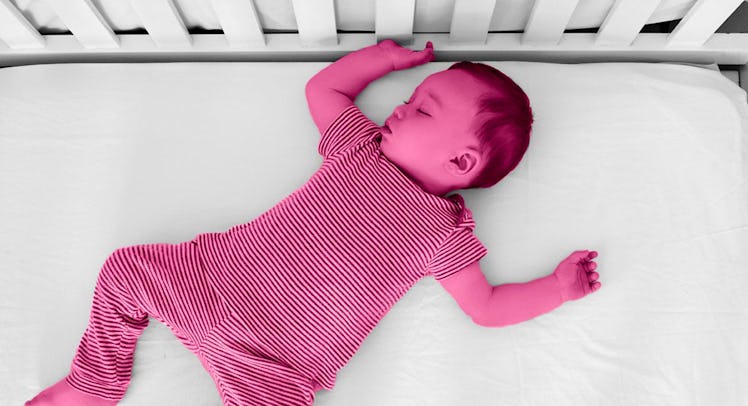How to Use White Noise to Get Babies to Sleep
Not every baby will need a white noise machine, but for those that do, safety should come first.

Of all the things that anecdotally soothe babies to sleep — Bach concertos, long neighborhood strolls, loud shushing, vigorous rocking, running the vacuum cleaner — the white noise baby machine offers a concise and reliable sleep strategy for babies. Using white noise at bedtime can help babies and children (not to mention parents) get through the night, even if sleep happens only in few-hour increments. That’s because white noise can condition babies to feel drowsy. White noise baby machines work by simulating a womb-like environment that is comfortable and calming. They are particularly effective at eliciting a Pavlovian reaction, which is why these machines are so popular among parents struggling to get some rest. But not all white noise machines are created equal.
Be the first to get Fatherhood — our comprehensive guide to birth, budgeting, and becoming a happy parent — available for preorder now!
“Any time you bring any sort of thing into your baby’s environment, you need to make sure it’s safe,” explains Dr. Elizabeth Murray, a pediatric emergency physician. “We don’t necessarily think of white noise as being loud, but some of those machines can be very loud.”
Recent studies have suggested that many white noise machines for babies are, in fact, too loud for babies to sleep to. The loudest setting on many machines can exceed the 50-dB limit enforced in hospital nurseries. Some machines can be even louder, generating more than 85 dB at typical crib-mounted distances. That’s the limit at which OSHA requires hearing protection. That is also, not to put too fine a point on it, a seriously bad idea to put next to a baby.
There are other safety concerns. Rail-mounted white noise machines hidden inside a stuffed animal can be cute but bring the temptation to place them too close to the mattress, making them unsafe. Generally, babies shouldn’t have anything in their crib in the first year other than a flat mattress and fitted sheet. Extraneous bedding and plush animals can be very dangerous for a child too young to roll away from danger. “Something on a shelf, near the crib, is fine,” says Murray. “Just something simple.”
Parents don’t necessarily need to avoid more powerful machines but should be aware of how loud they get, and always start out at the lowest setting. If the baby can’t hear the machine over their own crying, it defeats the purpose, but in the long run, a few nights of interrupted sleep while establishing the minimum effective volume is a reasonable price to pay for future restfulness (and a kid without an impaired hearing).
How to Use White Noise for Baby Sleep
- Choose white noise baby machines that are low pitched but produce steady sounds.
- Turn white noise machines all the way down to start. The idea is to make it work at the lowest volume possible. Most machines can exceed the maximum decibel level recommended for hospital nurseries.
- Make sure whatever volume level you go for isn’t loud enough to overshadow your baby’s cries.
- Place the white noise machine near the crib, but not in it. Items in a crib can be very dangerous for children.
- Play with the sounds a bit. Every baby reacts to different tones differently. Lower rhythmic sounds may be better.
- Music isn’t white noise so don’t play it.
It’s also important to keep some perspective. The fact is that nobody really sleeps through the night. As numerous fitness apps and sleep trackers have shown, even adults have periods of light rousing. The key to sleep training is to develop a healthy sleep ritual that helps kids put themselves to sleep. For the right kind of kid, white noise done right is a part of that, but if a child doesn’t need it, they simply don’t need it. It’s worth letting a baby soothe themselves as much as possible in order to find the right path.